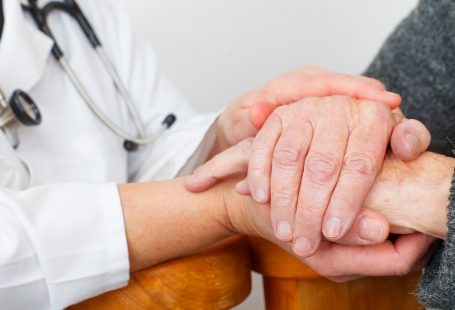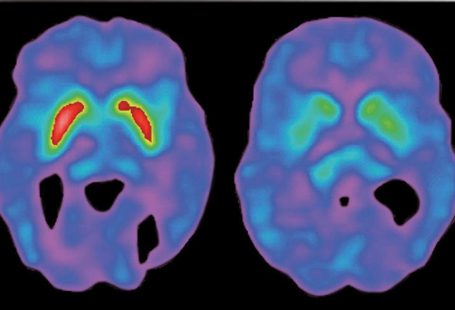
Parkinson’s disease (PD) is the second most common neurodegenerative disease, with a life time risk of 4 percent. However, risk increases with age with a prevalence of one percent at age of 65 but rising to 20 percent after the age of 80 (Jane A. Driver. Neurology 2009) One out of twenty patients, is however, diagnosed before the age of
40. Parkinsonism alone is associated with a two-fold increase in the risk of death with a significant impact on mobility and balance. The first detailed description of PD appeared in English literature in 1817 that documented full clinical feature of this disease by James Parkinson. The disease was better recognized around turn of 20th century but for nearly 50 years was without treatment except for some bold surgical experiments from leading neurosurgeons involving cutting and burning various brain regions. However, treatment radically changed around 1960 with discovery of dopamine and its role in the brain. Since then scientist and physicians have done significant efforts in understanding its causes, better treatment options, and improve quality of life. The goals have turned out to be very elusive. Though we have made many strides in improving quality of life with symptomatic treatments and understanding changes in the brain, we are still unsure of the actual causes and ways to stop the progressive brain cell loss.
 Research in PD is a big focus at University of Nebraska Medical Center where clinicians and scientists are focused on many questions about PD. In this series of articles, I would like to share with you some of the ongoing work in PD at UNMC. I would like to start with an overview of the ongoing work. Let’s start with what are the big questions with Parkinson Disease that we are addressing at UNMC?
Research in PD is a big focus at University of Nebraska Medical Center where clinicians and scientists are focused on many questions about PD. In this series of articles, I would like to share with you some of the ongoing work in PD at UNMC. I would like to start with an overview of the ongoing work. Let’s start with what are the big questions with Parkinson Disease that we are addressing at UNMC?
a. FUTURE OF DIAGNOSIS AND CARE:
How can we diagnose PD earlier and more reliably? How can primary care providers diagnose PD earlier and reliably? How can we monitor for effects of treatment and progression more easily and reliably?
b. NEUROPROTECTION:
How can we slow down the disease or stop it from progressing? What should we target in the brain? What is the role of Immune system?
c. EPIDEMIOLOGY OF PD:
How common is PD and how are patients managing PD? What made them more likely to get it? How is it affecting their life? How are people handling it and what is the impact on their quality of life?
In the table below, I have enlisted the current ongoing and recently finished studies at UNMC. In the coming articles we will be reviewing some of these studies individually to understand how they are adding to our knowledge.
Table 1. Recent and ongoing Research Trials in PD
A. Epidemiology:
- State PD Registry of Nebraska
a. Study with hospital discharge data
b. Cancer registry
c. Agriculture registry study - PD inpatient care Study
a. Inpatient Nurses survey
b. DBS 5-year experience
c. Inpatient Quality measures - PD Epidemiology in a developing country
a. Characteristics of PD in Pakistan
b. Non-motor symptoms in PD in Pakistan
c. Treatment trends in PD in Pakistan - Effective utilization of therapy resources in PD
B. Living with PD/quality of life:
- Naturalistic Driving study in PD
- PD patient symposium survey
- Vitamin deficiencies in PD
- Wii balance board for PD
- Effect of the Usage of Handrails on Gait Dynamics in People with Parkinson Disease
C. Drug Therapy trials in PD:
- Use of Liquid Sinemet infusion gel in PD (DUOPA trial)
- DUOGLOBE study (DUOdopa/Duopa in Patients with Advanced Parkinson Disease a Global Observational Study Evaluating Long Term Effectiveness)
- Improving gait patterns in PD with structured auditory stimulus
D. Neuroprotection trials:
- STEADY PD3 (Safety, Tolerability and Efficacy Assessment of Isradipine for PD) (A phase 3 Double blind Placebo Controlled parallel group Study of Isradipine as a Disease Modifying agent in subjects with Early Parkinson Disease)
- SURE PD3 (A randomized, double blind, placebo controlled trial of urate-elevating Inosine treatment to slow clinical decline in early Parkinson Disease)
- Leukine Study (sargramostim for Parkinson Disease)
- NILO PD (A Randomized, double blind, placebo controlled, Phase IIa, Parallel group, two-cohort study to define
the Safety, Tolerability, Clinical and Exploratory Biological Activity of the Chronic administration of Nilotinib
E. Future of Diagnosis:
- Assessment of motor state through smartphone applications: TapPD, Smart4Sure, mPower,
- Temporal Variability of daily ambulatory activity as a non-invasive biomarker for Parkinson Disease
- Wearable technology such as PKG and Actigraph use in evaluation
of Parkinson Disease.
F. Education Research: Training the physicians of tomorrow:
- Use of Blended learning for Residents for Movement disorders
- Online Distance learning internationally in Pakistan for Movement Disorders
Reference: Jane A. Driver, MD, MPH, Giancarlo Logroscino, MD, PhD, J Michael Gaziano, MD, MPH, and Tobias Kurth, MD, ScD. Incidence and remaining lifetime risk of Parkinson disease in advanced age. Neurology. 2009 Feb 3; 72(5): 432–438.[ PMC]






